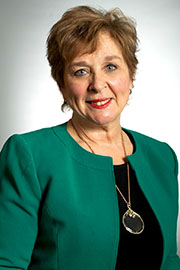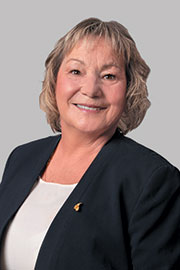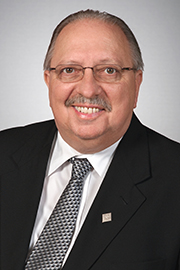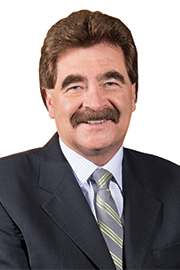- Oct/16/23 4:20:00 p.m.
- Re: Bill 135
Thank you to the member opposite for her comments. I listened intently and the strangest thing is that we were in the Ontario Medical Association thing at lunch and the member was talking about how important team-based care is; the OMA was talking about how important team-based care is, and what this bill is about is moving home care into Ontario health teams, which are team-based care.
The member seems to think that this does nothing to improve home care, but Sue VanderBent, for example, and Matthew Anderson say it will help transform the delivery of home care by making home care part of team-based care through Ontario health teams. This bill is getting us to that point.
Will the member not stand up and support this? Or does she love the status quo, which she says isn’t working, so much that she won’t support us improving the system?
The member opposite talked about how there’s no money in this bill. I think she said $122 million, but it’s actually $128.2 million, and that won’t provide a single bath for a single senior. Does the member want to perhaps elaborate about the $1 billion that was in budget 2022 over three years, including $569 million brought up to the beginning, that she neglected to mention that will provide baths for seniors?
- Hear!
- Rabble!
- Hear!
- Rabble!
- Oct/16/23 4:20:00 p.m.
- Re: Bill 135
I want to talk about an example of what happened in the long-term-care system, because the Ontario health teams now, as was pointed out, oversee that.
This is a CBC article from October 5, 2023, and I’m going to read:
“Less than a year after the province heralded its opening as a safe option for seniors, a new long-term care home in Owen Sound ... has been forced to close its doors to new admissions due to serious problems found during inspections.
“The province’s Ministry of Long-Term Care issued a cease of admissions order to Southbridge Owen Sound on Aug. 16 due to ‘significant instances of non-compliance,’ a spokesperson for the Minister of Long-Term Care said. Inspection reports show those issues include residents wandering away from their rooms or the facility altogether, as well as a report of a resident lying in a room with urine on the floor left with no way to call for help.”
How do we trust that this government is going to get health care right if they can’t even get long-term care right?
- Hear!
- Rabble!
- Oct/16/23 4:20:00 p.m.
- Re: Bill 135
The Ontario Medical Association is at Queen’s Park today and they want more interdisciplinary primary health care teams; that is, a physician who works with a nurse practitioner, with a nurse, with a social worker, with a dietitian, with a physiotherapist, with a psychotherapist, with a health promoter, with a community development worker as part of a community health centre, as part of a family health team. They were talking specifically about primary care.
So, primary care of interdisciplinary care teams? Yes, absolutely. We need those, the sooner, the better. This is but one little component of Ontario health teams. Ontario health teams look at hospitals, look at long-term care, mental health and addictions, palliative care, primary care and home and community care. The physicians were not talking about Ontario health teams.
Ontario welcomes the for-profit company in long-term care. The for-profit companies are able to give hundreds of millions of dollars to their shareholders at the expense of quality care. The pandemic showed us how bad that was: people dying of starvation, people dying of dehydration, people dying because they’re covered in bedsores because they haven’t been changed.
Ontario knows better than that, and that’s no more for-profit in long-term care.
Pendant l’heure que je viens de passer, j’ai lu extrait après extrait de lettres des résidents de Nickel Belt qui démontrent que, dans les petites communautés, c’est Bayshore qui a le contrat; dans les petites communautés, ils ne sont pas bien desservis parce que celui qui a le contrat, Bayshore, n’est pas capable de recruter du personnel pour aller y travailler.
D’avoir maintenant un organisme provincial pour s’occuper des services à domicile va rendre ça pire, pas mieux, que ce qu’on a là.
I quoted the minister who had quoted $128.2 million over three years at $2.2 million per team to help the teams work together. That’s the comment that I had made.
I also made the comment that home and community care have not seen a base budget increase in the last 12 years; that is the five and a half years that this government has been in power as well as when the Liberals were in power. This is a very long time where the needs of residents have increased, the demand for those services have increased but those little, mainly community-based not-for-profit agencies have not seen a base budget increase.
- Hear!
- Rabble!

- Oct/16/23 4:20:00 p.m.
- Re: Bill 135
C’est un plaisir de continuer le débat avec la députée de Nickel Belt.
Ce projet de loi devant nous propose de remplacer des réseaux locaux d’intégration de services avec un nouvel organisme. Le nouvel organisme s’appelle Santé à domicile Ontario. C’est quelque chose qui a été demandé par des professionnels : de remplacer les réseaux locaux d’intégration de services avec quelque chose de nouveau.
Est-ce que la députée est d’accord avec les professionnels qui veulent remplacer les réseaux locaux? Est-ce qu’elle est d’accord avec ces professionnels?
- Hear!
- Rabble!
- Oct/16/23 4:30:00 p.m.
- Re: Bill 135
Thank you so much to the member for Nickel Belt for those remarks. I don’t think there’s a person in the House who understands our health care system better than the member for Nickel Belt. The government would do well to listen to her.
I’ve been speaking with organizations in Ottawa West–Nepean that are providing not-for-profit home care and community care services—Carefor, the Olde Forge Community Resource Centre, Jewish Family Services, Meals on Wheels—and all of them are struggling so much due to the underfunding of these home care and community care services by this government. They are struggling because, yes, the government promised additional funding but then hasn’t delivered it, so they are bleeding money every single month, waiting for this money to actually flow. They are losing staff every month because they can no longer compete with other sectors. The staff feel like they are being asked to do the impossible, to fill in the gaps of the social safety net this government has broadened.
My question to the member from Nickel Belt is why should anybody trust this government’s changes on home care and community care when they’ve done such a bad job managing the system to date?
- Hear!
- Rabble!
- Oct/16/23 4:30:00 p.m.
- Re: Bill 135
Before I forget, I just wanted to take a moment. It’s October 16; this is my mother’s birthday. She passed away several years ago, but I know she’s with me here in spirit. I just want to take a moment to say that I’m thinking about her.
I wanted to thank the Deputy Premier and Minister of Health, first of all, for her leadership in building a stronger and more connected and publicly funded health care system that is centred on the needs of patients. I’m very pleased to be rising today to speak about our Convenient Care at Home Act on behalf of the constituents of my riding of Eglinton–Lawrence and as the parliamentary assistant to the Minister of Health.
Speaker, under the leadership of Premier Ford, our government has been making record investments in health care to improve health care delivery and connect every person in Ontario to care that is faster, easier and closer to home. Our government has increased the health care budget by over $16 billion—with a “b”—since 2018, an average of 6.1% per year since we have been elected.
We’ve focused on:
—expanding access to primary care providers, building and strengthening health care infrastructure and growing the health care workforce for today and for years to come;
—bringing down wait-times for services;
—reducing unnecessary emergency department visits, avoidable readmissions to hospitals and the rate of alternate level of care;
—improving access to mental health and addictions services, including for individuals in crisis;
—improving access to digital services;
—providing people with more connected and convenient care through local Ontario health teams; and
—delivering better coordinated care in the community and in the home, including improving transitions and wait times between hospital and home care.
We have heard loud and clear that Ontarians want better and faster access to home care services. The proposed Convenient Care at Home Act is another important milestone in providing the right care in the right place through better home and community care in our province, and in supporting Ontario health teams to deliver comprehensive, integrated care to patients, families and caregivers.
Ontario health teams are bringing together health care providers, including primary care, home care, long-term care and hospitals, to work together to ensure people can move between providers more easily with one patient record and one care plan that follows them wherever they go to receive care.
Speaker, Ontario has world-class health services provided by our incredibly skilled and dedicated health care workers, like my colleague from Mississauga Centre, MPP Kusendova, who is a registered nurse.
Our health care providers are an important part of our health care system. They are instrumental in supporting healthy and strong communities, and we sincerely appreciate everything they do in providing extraordinary care and support to every person in Ontario.
Unfortunately, for all concerned, over the past decades the province’s health care system has become fractured and disconnected. Patients, families, caregivers and providers have all repeatedly identified the same types of challenges and barriers. Our government has listened to them and continues to take bold action to transform our health care system by overcoming these challenges and barriers so that it’s focused on the needs of patients, families and caregivers, and so that it more effectively supports our health care workers.
A key part of building a patient-focused health care system was the creation of Ontario health teams, which the province introduced in 2019, and which will be further supported and enabled by the proposed Convenient Care at Home Act.
In 2019, our government brought forward a new legislative framework to support better health care. Through The People’s Health Care Act, a new statute was enacted—the Connecting Care Act—which established Ontario health teams as a new model of health care organization and funding and a model of integrated, population health-based care delivery, where health and community care providers work together as one team for their local population, even if they’re not in the same organization or physical location.
Since 2019, groups of health care providers and organizations across the province have come together to form these Ontario health teams in every region of the province. In December 2019, we announced the first cohort of 24 Ontario health teams that were created across the province. And in the following years, more teams have been established.
Betty-Lou Kristy, chair of the Minister of Health’s patient and family advisory council, has supported Ontario health team development within the Ministry of Health since her appointment and continues to play a key role in supporting Ontario health teams, along with the council. I want to thank her for her work.
There are currently 57 Ontario health teams in every corner of our province. And we are very, very close to the goal of full provincial coverage by Ontario health teams, ensuring that everyone in Ontario has the support of an Ontario health team. The Ministry of Health and Ontario Health continue to engage with providers in west Parry Sound so they can become an Ontario health team in the near future, building on their commitment and strong foundation to integrating and improving care in their community.
Ontario health teams have focused their initial efforts on improving health care experiences and health outcomes for their identified target patient population, such as advancing digital health and virtual care initiatives, enhancing the quality of home and community care for seniors and their caregivers, creating more seamless care pathways and making transitions between health care providers smoother for patients. Over time, Ontario health teams are expanding the services they provide, and they’re continuing to build towards integrated care for their entire attributed population.
At maturity, Ontario health teams will be held clinically and fiscally accountable for providing a full and coordinated continuum of care. Through Ontario health teams, patients will experience improved access to health services, including digital health and virtual care options; better coordination and transitions in care; and better communication and information from their health care providers.
As our government modernizes home and community care, and home care service gradually shifts under the auspices of Ontario health teams, patients will greatly benefit from these changes. Home care will be easier to find and navigate, and transitions from hospital to home will be more convenient and easier to understand, with home care plans for patients that they can hold, understand and follow. Because, as has been said before, the only thing better than having care close to home is having care in your home.
The Ontario health team model provides the opportunity for front-line health care professionals to expand on their great work and take the lead at doing what they know best: delivering excellent patient care. Ontario health teams are already well on their way to transforming how people access care in their communities, and there are many instances of health and community providers coming together to provide more connected and convenient patient-centred care, designing and implementing new integrated models that are responsive to the unique needs of the communities that they serve.
For example, the Algoma Ontario Health Team has established a community wellness bus, bringing primary health care to vulnerable communities, helping to provide easier access to health and social services, improve health outcomes and reduce gaps in mental health and addictions care. Between April 2022 and March 2023, the community wellness bus in Algoma had more than 5,000 visits.
Another example is the neighbourhood care team, which is closer to home, in my area. It was established within a seniors’ housing building by the North Toronto Ontario Health Team. The neighbourhood care team offers low-income seniors and tenants a range of health care services, including regular blood pressure checks, foot care, access to social workers, wellness checks and attachment to primary care.
The Middlesex London Ontario Health Team is connecting primary care providers to on-demand video or audio phone interpretation services to enable patients to receive care in the language they are most comfortable using.
Through their surgical transitions projects, the Noojmawing Sookatagaing Ontario Health Team has reduced 30-day emergency department visits by around 32%, and reduced length of stay by 48% for those recovering from surgery, allowing people to spend more time at home.
The Mid-West Toronto Ontario Health Team has a remote care monitoring program that has seen positive outcomes in supporting alternate-level-of-care patient discharges from the hospital back into a more appropriate setting in the community. And that program is now being spread to other Ontario health teams across the province, because we’re going to take the best of what we can find in these teams and spread those around, because we can learn from these things and everybody can benefit.
Ontario health teams are also exploring new partnerships with home care providers for more convenient and coordinated transition services. An early leader is the Southlake Regional Health Centre in my friend’s riding of Newmarket–Aurora, a member of the Southlake Community Ontario Health Team. Their geriatric alternate-level-of-care reduction program ensures that people who have completed a hospital stay in acute care are safely transitioned home, with a home-care plan in place before they leave.
A number of Ontario health teams are developing new models of integrated home care by participating in a home care leading projects initiative. For example, the Guelph Wellington Ontario Health Team will implement an integrated primary care team model that integrates home and community care support services coordinators into primary care teams to bridge information gaps, enhance care quality and ensure that home care providers are dedicated members of the patient’s care team. The Durham Ontario Health Team will implement a primary and community care hub model providing integrated and wraparound services for older adults through a central location, ensuring seamless transitions among services and incorporating a flexible support network with non-traditional providers to address diverse patient needs.
Ontario health teams are also enhancing home care and primary care services so that patients and families can get the care they need in their homes and communities: for example, the East Toronto Health Partners Ontario Health Team, which together with its primary care network has developed primary and community care response teams to support primary care providers in providing care to home-bound and vulnerable seniors with unmet health or social needs.
Ontario Health will be leading next steps in the assessment of these new models to inform their scale and spread to other Ontario health teams. As new models are replicated across the province, there will be tangible improvements to patient care and patient and family experience.
Speaker, the government continues to support and invest in Ontario health teams. When Ontario health teams were approved, each team was eligible to receive one-time funding, and the ministry has directly invested more than $118 million to support initial development, build capacity for collaboration and implement the Ontario health teams model.
The Ontario health teams are also playing a pivotal role in implementing our Digital First for Health Strategy. An integrated health care system requires strong digital capabilities at the front lines of clinical care. The Ministry of Health is working closely with Ontario health teams to support digital health adoption, including the development of digital standards for virtual patient visits, digital health information exchange, online appointment-booking and patient portals, while enabling Ontario health teams to also implement digital solutions in a way that meets their local needs. Supporting digital health and Ontario health teams is giving front-line providers better access to the tools and information they need to meet the needs of their patient populations and empowering patients with choices in how they can access health care.
More than $124 million has been allocated to support Ontario health teams and other health service providers in providing digital and virtual care options so that people in Ontario can easily connect with a health care worker from the comfort of their own home. This includes remote care monitoring, online appointment-booking, among other advances. More than 760 approved digital and virtual care projects have benefited over 4.2 million patients, and successful digital projects that provide a significant impact on health care delivery are being considered for further funding to spread and scale initiatives to other Ontario health teams, eventually, across the province.
The province also continues to develop operational and policy supports for Ontario health teams. This includes a coordinated network of supports that assists Ontario health teams at all stages of their development and implementation with guidance tools, webinars, best practices and other approaches, delivered by partners with expertise and experience in the delivery of integrated care.
About a year ago, the province also provided updated direction to further ensure Ontario health teams are built to last and positioned to deliver better patient care. The Path Forward guidance focused on establishing a common, not-for-profit corporation for the purposes of managing and coordinating an Ontario health team’s activities, standardizing the groups involved in the Ontario health teams’ decision-making, addressing operational capacity and support and communications and implementing common integrated clinical pathways to help teams deliver proactive, evidence-based care for patients with specific conditions. The province continues to engage with Ontario health teams on the implementation of this guidance and the supports required to advance these priorities.
Recently, our government invested $43 million to bolster Ontario health teams, to support their ongoing work to break down long-standing barriers between different parts of our system, to ensure that people experience connected care from their providers and help patients navigate local services, to improve access to preventive care and to advance innovative care solutions across hospitals, primary care, home and community care and other sectors, to improve patient experiences, health outcomes and well-being.
To support all teams in coordinating care for their local communities and prepare home care transitions, an initial group of 12 Ontario health teams from all areas of the province has been selected. They will lead the work to accelerate the delivery of home care and share lessons with all teams. The 12 teams include:
—All Nation Health Partners, serving Kenora and Sioux Lookout;
—Burlington Ontario Health Team, serving Burlington and surrounding areas;
—Couchiching Ontario Health Team, serving Orillia;
—Durham Ontario Health Team, serving Durham;
—East Toronto Health Partners, serving east Toronto;
—Frontenac, Lennox and Addington, serving Frontenac, Lennox and Addington, obviously, including Kingston and surrounding areas;
—Greater Hamilton Health Network Ontario Health Team, serving Hamilton;
—Middlesex London Ontario Health Team, serving Middlesex and London;
—Mississauga Ontario Health Team;
—Nipissing Wellness Ontario Health Team;
—Noojmawing Sookatagaing Ontario Health Team, serving the city and district of Thunder Bay; and
—North York Toronto Health Partners Ontario Health Team, serving North York, Thornhill and Marhkam.
With support from the Ministry of Health and Ontario Health, these teams will focus on connecting primary care, hospitals, and home and community care for patients with chronic diseases like chronic heart disease and diabetes, so that the experience is seamless and we avoid unnecessary visits to hospitals and emergency departments. These teams will look at how to expand 24/7 patient navigation solutions for local health services as part of Health811.
It’s very encouraging to see how the Ontario health teams are continuing to innovate and build partnerships, with the ongoing support of the Ministry of Health. I look forward to what they will accomplish next, particularly as they continue to take on a greater role, and I’m really excited about the primary care and home care part of this.
The Ontario government is building on the work that has already been done to connect people to home and community care through Your Health. Over time, these changes are going to build a more connected and convenient model, focused on patients and delivering the best care. That’s what this government is focused on.
- Hear!
- Rabble!
- Oct/16/23 4:30:00 p.m.
- Re: Bill 135
Everybody will remember two weeks ago, on September 25, the day we were back at Queen’s Park, there were 10,000 people on the front lawn of Queen’s Park asking this government to not further privatize our health care system. They came from all over the place. Not one member of the Conservative Party went and saw their constituents out there. There were people from North Bay, people from Timmins, people from Sault Ste. Marie, people from all over Ontario. They were asking us not to further privatize our health care system.
This bill continues to open the door to privatization. The small, not-for-profit agencies that the member mentioned have not seen a base budget increase in 12 years. They need more money in order to meet the needs of the people of Ontario.
- Hear!
- Rabble!
- Hear!
- Rabble!
- Hear!
- Rabble!
- Oct/16/23 4:50:00 p.m.
- Re: Bill 135
To the member from Eglinton–Lawrence: In Niagara, many residents have expressed concern about privatization of our home care system. While other provinces, like BC, choose to reinvest in their public health care, Ontario has looked to privatization. Seniors who built our province and have supported health care for a lifetime with their wages want to know public health care will be there when they need it the most.
Niagara has a mix of not-for-profit care providers. Speaker, to the member: Why doesn’t the bill explicitly prevent for-profit entities from dominating the home and community care sector in regions like Niagara, ensuring patient care remains paramount?
- Hear!
- Rabble!
- Oct/16/23 4:50:00 p.m.
- Re: Bill 135
I’ve enjoyed the debate this afternoon very much. I like this bill and everything I’ve heard so far. Can the member from Eglinton–Lawrence tell us what other steps the government is taking to ensure people in my riding and across Ontario have access to home care when they need it?
- Hear!
- Rabble!
- Oct/16/23 4:50:00 p.m.
- Re: Bill 135
I listened to the member’s comments closely, and I’m going to ask her, through you, Speaker: Given that the government is proposing this billion-dollar expansion in home care, how does the member feel about the fact that we have an Auditor General report that tells us that we lose as much as 32% of every dollar we invest in home care when we do it through for-profit agencies? And what is the government’s answer to a guy like Paul, a home care attendant I met in a grocery store the other day who tells me that when he travels around the city of Ottawa—he doesn’t have a car; he uses transit—travel is not covered?
As the member from Nickel Belt said, in three different pieces of home care legislation offered by this government, no one is covering Paul’s travel. He is looking in on neighbours; he’s looking in on people with disabilities and seniors. My question to the member: Why are you allowing 30% of the government funding to be lost to for-profit agencies, and why aren’t we covering Paul’s travel? Doesn’t that matter to you?
- Hear!
- Rabble!
- Oct/16/23 4:50:00 p.m.
- Re: Bill 135
I work in the ER, and one of my biggest pet peeves when I’m filling out that CCAC referral for my patients is that I actually don’t always know if or when that home care nurse or PSW will actually come to change the wound care or provide the care that I know that patient needs. Sometimes they do not come, and then the patient ends up right back in the emergency room two or three days later.
Can the member please elaborate on how this particular bill will solve that issue by putting home care right into Ontario health teams, which we have started the transition to through the People’s Health Care Act back in 2018? And how are we continuing taking significant milestones in investing in home care and in other programs like paramedicine, which is another very successful program that has worked in my community? Can the member elaborate on that, please?
- Hear!
- Rabble!
- Oct/16/23 4:50:00 p.m.
- Re: Bill 135
I thank the member opposite for the question. I really don’t know where the member is getting this. This bill has nothing to do with privatizing anything. This bill is about making sure that we have home care services to deliver throughout the province, and making sure those home care services are the same, as the minister said, for every part of the province and that people get the home care that they need and are looking for. That’s what we’re here to do.
The opposition seems to focus on issues that I don’t think are what people are focused on. What I think people are focused on is making sure they actually get the home care that they’re looking for, and that that home care provides what they need so that they can stay in their home as long as possible.
We’ve all talked about the importance of integrating care, and making sure it’s connected and convenient and that there’s one care plan. That’s what people want. They don’t want to have to go to several different places. They want their health care providers to know that one health care provider is saying that they can rely on that care plan going forward, and so that’s what this is going to do: It’s going to bring it home.
But there’s also that billion dollars that we’re investing in home care, to make more home care available across the province of Ontario, which is a huge investment in a sector which never gets enough. This is the first government that stepped up and put a billion dollars into it.
This bill, like some of the other bills, is about changing the structure of home care and integrating it into our Ontario health teams, so that home care and community care are a fundamental part of our health care system, where it should always have been. It is now going to be integrated and part of the entire system, and that is where it should be, because that way, home care will get the attention it deserves.
The whole objective of this program is to make sure that everything is continuous and seamless for the patient, and also to make sure that the patients have the care they need at home, so they can stay healthy, so they don’t have to come back to the hospital in a few days because they didn’t get the bandage changed or whatever care they needed at home. It’s working very well at Southlake, and it’s a model that we can look to. The virtue of these Ontario health teams is when one Ontario health team has a good idea that works, it can be shared with others.
- Hear!
- Rabble!
- Hear!
- Rabble!
- Oct/16/23 5:00:00 p.m.
- Re: Bill 135
Kind of in line with what the member from Mississauga Centre just said, we know that our home care system fails more people than it helps every single day. There’s more of a wait-list to get the home care you need and more missed appointments than in any other parts of the health care system put together. We know how to fix this.
How do you fix this? You make the PSW job a good career. You give them a permanent, full-time job with good pay, benefits, sick days, a pension plan—
- Hear!
- Rabble!
- Hear!
- Rabble!
- Oct/16/23 5:00:00 p.m.
- Re: Bill 135
The member opposite who asked the question, the member from Nickel Belt, whom I respect a great deal, who has been here for 16 years, knows that not everything is in each bill. We don’t do that. We don’t reiterate all the promises in every bill and discuss everything at once. So it’s kind of a disingenuous question, I think.
Interjection.
We know we have more work to do, but part of what we’re doing here with this bill, with Ontario health teams and with the expansion of interprofessional primary care teams, is making sure that the care is provided within the integrated context of a team so that the PSWs can have better schedules, can be part of a team, can have people to talk to, can talk to the nurse or the doctor or the other care providers and be part of a team and not be isolated. So, it’s not just about the money for the PSWs. That’s part of it for sure and that’s why we raised wages, but it’s also about better work conditions.
Everybody wants to make sure when they need home care that it’s going to be there when they need it. We all want that. I have constituents too who want to make sure it’s there. We want to deliver it for them. That’s what this is about.
- Hear!
- Rabble!
- Oct/16/23 5:00:00 p.m.
- Re: Bill 135
It’s always a pleasure to rise in the House. It’s been a fascinating day, Madam Speaker. I came in this morning and went to the front lawn, and there we had a protest for kids with autism. What was interesting about that to me is there were seniors there. They were taking care of their kids and their grandkids because there isn’t enough funding.
And then I come in here—because I like coming to question period; not that I get a lot of questions, but I like coming to question period—and they ended up talking about the Conservative government that was being investigated by the RCMP. I thought that was fascinating, to see that happening right here on the floor.
Then, after lunch—because I had a sandwich at lunch and went and saw the doctors; that was really nice and fascinating talking to them—after 1 o’clock, we have another motion come with residents from Ontario. This is their House. They come here and they’ve got an issue with what you’re doing with a spa at Ontario Place. You know what happens? They cut off debate, which wasn’t fair to the residents, by the way. You know what? There were seniors sitting up there who had a tough time getting down here. They had to take public transit. They had come here thinking that this House was going to listen to them and we didn’t listen to them, and that was wrong today.
And then right after that, the House leader for the Conservatives nodded to the health minister to bring this bill forward. You know what? I found out about it at that very moment, that they want me to stand up here and talk for 20 minutes. I wasn’t sure if it was 20 minutes or an hour; I would have done both. But I wasn’t sure what I had to do.
So I spent that one hour listening to the health minister and listening to the super senior that’s on that side of the House. I listened to him. Then as I was doing that, I’m jotting down some notes here. Then, I decided to say, “Okay, I’ve got to take at, you know, the bill. I’ve got to do all of that within an hour.” They didn’t give me a chance to run upstairs and talk to a stakeholder. “What do you think of this? Do you think this is a good bill? Do you think we can work with the bill? Do you think it’s something we can support?” I couldn’t do that.
If you want a bill to come forward, have that type of debate and have that type of interest in the province of Ontario, what should we have done? I think you should give the official opposition an extra—maybe a couple of days to at least do that, instead of an hour. Think about that.
When I went through the bill and I listened to one of the colleagues on that side—I don’t know the riding so I won’t say her name, because I will get called out if I do that—she talked about how nobody did anything for 25 years. She forgot to mention that in that space of 25 years, Mike Harris was the Premier of Ontario. Then she forgot to mention that the Conservatives were the official opposition for 15 years. So I wasn’t sure if she was talking about the Conservatives or she was talking about the Liberals, because that kind of takes that time frame in.
On home care—I’m going to pick this up, so I want to get this right—Premier Harris at the time brought in the privatization of home care. Now, think about it. Here we are—was it 15 and five?—20 years later, and what are we talking about? We’re talking about home care and why we shouldn’t privatize it. This is what he said—in fairness to the Premier, because I respect the Premier, he got elected by the citizens of Ontario. I don’t know how, but he did. At the end of the day, I respect the fact that he got elected just like I respect everybody out there who got elected. Here’s what he said when he privatized—
Interjections.
Interjections.
I want to be clear, as a critic for long-term care—and I will get into long-term care and that would probably take me an hour just there. I’m going to be very clear: I think the best thing that happens to all of us, including our super senior, is that we should be staying home as long as we can. We absolutely should be.
I’ll do a quick story. It’s a little off my script and I haven’t got into the other notes. I’ll tell you a little story. I’ve said this story before. My wife’s dad got sick. To my wife’s credit, she decided to retire. She was a principal in a school. She decided to retire a year early to take care of her dad, because she didn’t want him to go into a retirement home or a long-term-care home. This was before COVID, by the way, and we know what happened with COVID. That’s a whole different story.
She decided to say, “You know what? My mom and dad were there for me when I needed them,” whether that was in the early part of her first marriage and then my marriage. They were always there for her, so she said, “I’m going to be there for my family.”
Every day, she would go and see her dad, take care of him at breakfast, take care of him at lunch, take care of him at supper and make sure he was getting the right pills. That’s what home care is about: It brings family together.
We live about five, maybe 10 minutes—they’re Italian. I know there are a few Italians here, and one thing about the Italian family that nobody talks about: They love their family, but they also have to like to live within two blocks of each other so you can have spaghetti dinner on the weekend. That’s true.
Interjection.
A few years later, grandma got sick, Rita’s mom. Now, Mr. De Luca has passed away, but he knew at the end of his life how much his daughter loved him and took care of him. Then, grandma got sick. Same thing: My wife was there for as long as they could in home care.
That’s why home care is so important—because they get better care with a loved one. And I’m not saying anything about a PSW or a nurse or anybody, because they love the patients just as much—but the reality is very clear that they’re understaffed, particularly in home care.
When my wife’s mom and dad needed their PSWs, they were wonderful. But do you know what happened? And I’m sure that has happened to all of you. You can agree with me or disagree, and that’s fine, but I think it has happened to all of us. There were times when they needed that care but there was no PSW, because there aren’t enough of them, because that provider didn’t have enough staff. And why don’t we have enough staff? Help me out here. You guys are yelling at me all the time. Yell something out.
Interjections.
- Hear!
- Rabble!











